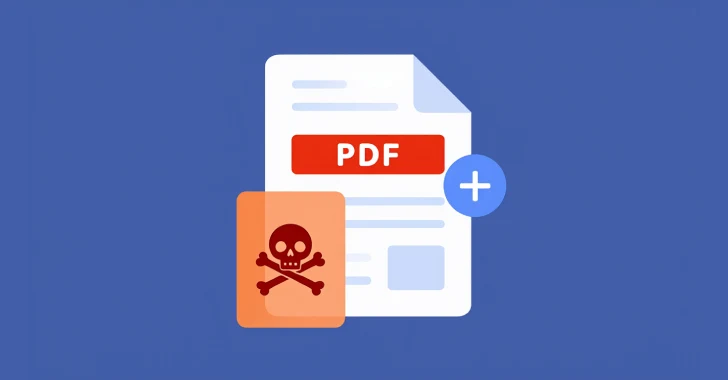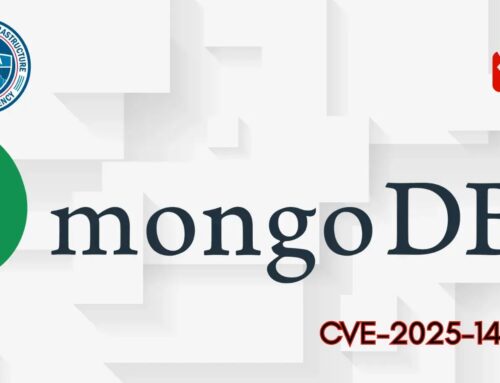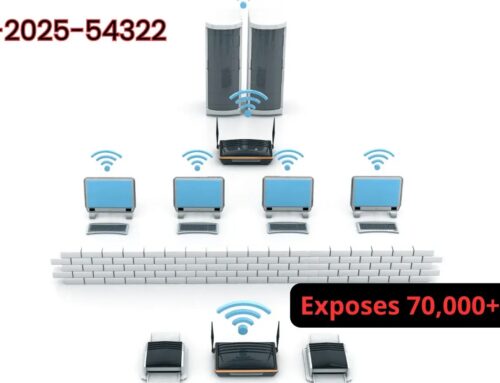
New TamperedChef Attack With Weaponized PDF Editor Steals Sensitive Data and Login Credentials
Unmasking TamperedChef: A Weaponized PDF Editor Steals Credentials
In an increasingly complex threat landscape, adversaries continuously refine their tactics. A recent discovery by Truesec, dubbed “TamperedChef,” highlights a concerning new evolution in social engineering: weaponizing seemingly legitimate software to deploy sophisticated information-stealing malware. This campaign specifically targets unsuspecting users across Europe, leveraging a tampered PDF editor to compromise sensitive data and login credentials.
The Nature of the TamperedChef Attack
The TamperedChef attack represents a significant supply chain threat, focusing on the distribution of compromised software. Instead of exploiting zero-day vulnerabilities in a traditional sense, this campaign weaponizes a trusted utility – a PDF editor – to achieve its malicious objectives. The core of the attack revolves around AppSuite PDF Editor, which has been modified to serve as a conduit for information-stealing malware. This tactic leverages a user’s inherent trust in common software applications, making the initial compromise highly effective.
- Social Engineering Foundation: The attack relies on users downloading and installing what they believe to be a legitimate and useful PDF editing tool.
- Malware Delivery Mechanism: The “legitimate” software acts as a sophisticated dropper, installing malicious components designed to exfiltrate data.
- Information Exfiltration: Once installed, the malware targets sensitive data and login credentials, posing a direct threat to personal and organizational security.
Tactics, Techniques, and Procedures (TTPs)
The TamperedChef campaign demonstrates a high level of sophistication in its TTPs. The actors behind this attack meticulously crafted their distribution method to bypass traditional security measures and exploit human trust:
- Software Tampering: Authentic software is modified to include malicious payloads without significantly altering its advertised functionality, thus reducing suspicion.
- Distribution Channels: While specific distribution channels are still under investigation, it’s highly probable that malicious advertisements, deceptive websites masquerading as legitimate software download portals, or compromised third-party software repositories are utilized.
- Data Exfiltration: The malware component is designed to identify and collect various types of sensitive information, including browser cookies, saved passwords, financial data, and potentially other confidential documents.
- Stealth and Persistence: The malicious components are likely designed to maintain persistence on infected systems, ensuring continued data exfiltration and maintaining a foothold for future operations.
Affected Systems and Data at Risk
While the initial report specifies users across Europe as primary targets, the nature of such a supply chain attack means that any system where the compromised AppSuite PDF Editor has been installed is at risk. Organizations and individuals using this specific software should conduct immediate assessments. The data at risk includes, but is not limited to:
- Login Credentials: Usernames and passwords for online services, banking, and professional platforms.
- Sensitive Documents: Files stored locally that contain proprietary information, personal identification, or financial details.
- Browser Data: Cookies, browsing history, and auto-fill information that can be exploited for further compromise.
- Financial Information: Credit card details, bank account information, or other financial data present on the compromised system.
Remediation Actions and Protective Measures
Defending against advanced social engineering attacks like TamperedChef requires a multi-layered security approach. Organizations and individuals must prioritize robust security practices and swift response mechanisms.
- Software Source Verification: Always download software directly from official vendor websites. Avoid third-party download sites, torrents, or unverified mirrors.
- Endpoint Detection and Response (EDR): Implement EDR solutions to monitor endpoints for suspicious activity, anomalous behaviors, and known malware signatures.
- Regular Security Audits: Conduct periodic security audits of systems and networks to identify unauthorized software, unusual network traffic, and potential compromises.
- User Education: Train users to recognize social engineering tactics, verify software legitimacy, and understand the risks associated with downloading software from untrusted sources. Emphasize the importance of vigilance before clicking links or downloading files.
- Strong Password Policies: Enforce the use of strong, unique passwords for all accounts and enable multi-factor authentication (MFA) wherever possible. MFA significantly reduces the risk associated with stolen credentials.
- Principle of Least Privilege: Grant users and applications only the minimum necessary permissions to perform their functions. This limits the damage in case of a compromise.
- Routine Backups: Maintain regular, secure backups of critical data to facilitate recovery in the event of a successful attack.
Tools for Detection and Mitigation
| Tool Name | Purpose | Link |
|---|---|---|
| Endpoint Detection and Response (EDR) Solutions | Real-time monitoring, detection, and response to threats on endpoints. | Varies by vendor |
| Network Intrusion Detection/Prevention Systems (NIDS/NIPS) | Monitoring network traffic for suspicious patterns and blocking known malicious activity. | Varies by vendor |
| Antivirus/Anti-Malware Software | Detection and removal of known malware signatures. | Varies by vendor |
| Software Composition Analysis (SCA) Tools | Scanning applications for known vulnerabilities and malicious components in third-party libraries. | Varies by vendor |
Conclusion
The TamperedChef attack serves as a stark reminder of the evolving and sophisticated nature of cyber threats. Adversaries are constantly seeking new avenues to exploit trust and bypass security controls. By weaponizing seemingly innocuous applications like PDF editors, they aim to broaden their attack surface and increase their success rates. Organizations and individuals must remain vigilant, prioritize secure software practices, and invest in robust cybersecurity defenses. Proactive threat intelligence, continuous monitoring, and comprehensive user education are critical in mitigating the risks posed by such advanced social engineering campaigns.





